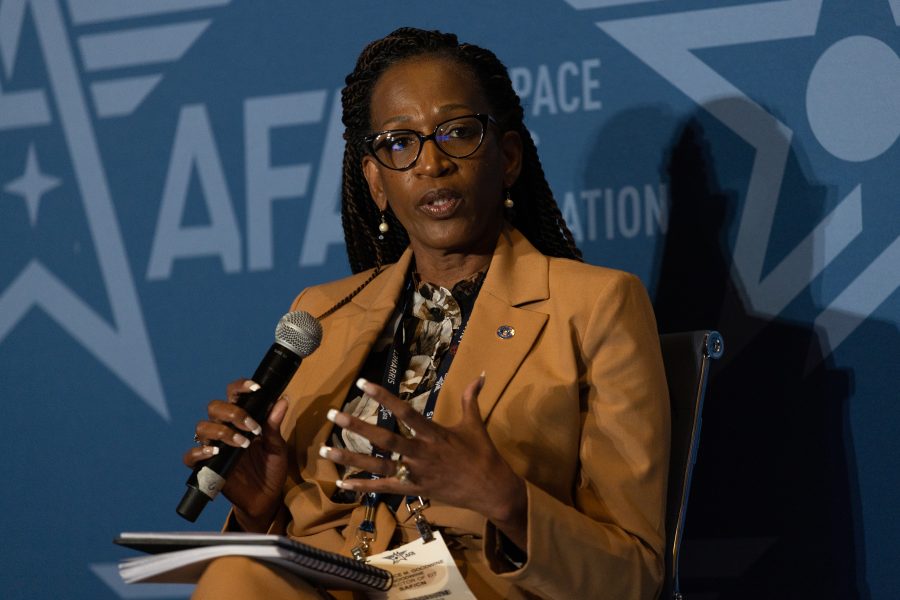The Department of the Air Force has a new Chief Information Officer, responsible for leading the department’s wide-ranging information technology efforts.
Venice Goodwine started the CIO job this week, an Air Force official confirmed, succeeding Lauren Knausenberger, who departed in June after more than two years in the position. Winston Beauchamp, deputy CIO, served as the acting CIO in the interim.
As CIO, Goodwine will oversee a portfolio worth $17 billion with more than 20,000 cyber operations and support personnel. And she’ll be tasked with spearheading everything from improvements to the Department’s much-maligned IT networks to connectivity for the ambitious DAF Battle Network plan to connect sensors and shooters around the globe.
Prior to taking the CIO job, Goodwine served as director of enterprise information technology under Knausenberger. Air Force IT has been undergoing a transition in recent years, with plans to outsource basic IT tasks across the entire enterprise to a contractor—dubbed “Enterprise IT as a Service” or EITaaS.
Service officials have claimed EITaaS will save money and provide faster connectivity, while freeing up cyber and information-focused Airmen from day-to-day IT tasks to focus on warfighting missions.
Slow networks across the department have long been a source of frustration for Airmen and Guardians, and Knausenberger herself acknowledged the issue in 2022, saying the department must “make big, bold capital investments in IT to drive the tech and process modernization we need to compete.”
Both Knausenberger and Space Force Chief Information and Technology Officer Lisa Costa have also noted the problem of “tech debt”—the department’s IT is so outdated that trying to fix it all would be expensive, to say nothing of upgrading it.
Yet upgraded IT will likely be pivotal to Air Force initiatives like the DAF Battle Network and Advanced Battle Management System, which will require massive amounts of computing and network power to sort through data and connect kill chains around the globe.
On top of that, Knausenberger spoke about the need for artificial intelligence to make sense of all that data—heightening the need for computing power and connectivity. Data and artificial intelligence is one of the directorates under the CIO.
“You have to have connectivity,” she said in November 2022. “You have to have ‘compute’ [computing power] wherever you need it. And networks—you have to be able to get data from anywhere to anywhere. You have to have software that makes it easy for a warfighter to interpret that picture and to make a decision.”
Now it will be up to Goodwine to help realize such a vision. At the same time, she’ll lead the DAF cybersecurity efforts. Most prominently, department leaders hope to implement “zero trust”—an approach that requires all users in and outside a network to be continuously authenticated and authorized to access systems—by 2027. In February, the department released a “road map” for reaching zero trust, which it updated in July.
Goodwine is a retired Airman herself, joining the service in 1986 as a signals intelligence analyst before moving to the Air Force Reserve and receiving her commission in 2003. She retired in 2022.
